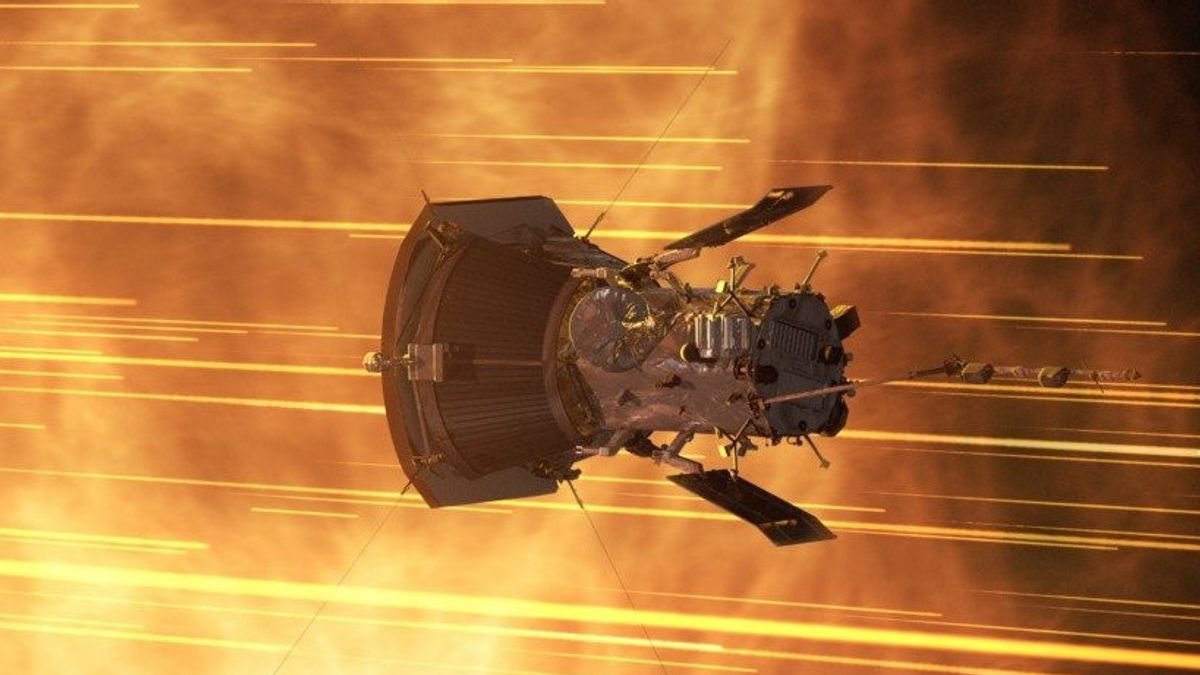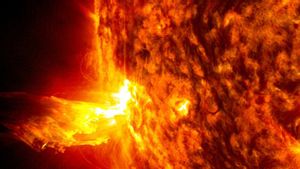JAKARTA - A NASA probe, the Parker Solar Probe, which investigates our Sun, reached a speedhouse of 394.736 miles per hour (mph) last month. This doubles the speed of a flash or 200 times the speed of a gun bullet.
This feat was achieved during its fifteenth trajectory on September 27, which broke the distance record with just 4.51 million miles from the Sun's surface.
Parker Solar Probe will spend the next week completing data transmission back to Earth from this last meeting, which focuses on recording the nature, structure, and behavior of the solar wind.
"Wana masuk ke pertemuan dalam keadaan baik, dengan semua sistem beroperasi normal," kata Michael lifeal dari Laboratory Physis Terapan Johns Hopkins dalam sebuah pos di blog NASA.
Since the launch of the Parker probe in 2018, a team of around eleven physicists, engineers, and support staff at Johns Hopkins has managed NASA's mission, including an initial design and construction of a $1.5 billion aircraft.
This fast-speed record plane like lightning has sent a stream of telemetry data (data status) to mission operators at Johns Hopkins' Applied Physics Laboratory in fact, Maryland, since October 1.
The aircraft's latest speed lag was achieved thanks to gravitational assistance from the Venus track, which is about 67,237,910 miles from the Sun.
SEE ALSO:
Parker completed 'Venus Flyby 6' on August 21, meaning he had traveled more than 67 million miles in more than a month.
In April 2021, Parker Solar Probe fought temperature 2370F and radiation 500 times stronger than Earth as it passed the upper atmosphere of the Sun for the first time.
Since the Sun does not have a solid surface, the corona is a place of action; exploring this area full of magnetic fields up close can help scientists better understand the explosion of the Sun that could disrupt life on Earth.
"Toting the Sun with the Parker Solar Probe is a monumental moment for science about the Sun and a very extraordinary achievement," said Thomas Zurbuchen, associate administrator of NASA's Science Mission Directorate, which celebrates the trajectory of the eighth Sun probe.
"In addition to providing deeper insight into the evolution of our Sun and its impact on our solar system, everything we learn about our own stars also teaches us more about stars in other universes." he was quoted as saying by DailyMail.
After completing the 17th "solar meeting", Parker has seven more tracks to examine the Sun planned by mission scientists by the end of 2024.
His last action after passing through the track will become closer to the atmosphere of the Sun, recording solar wind data so that the probe evaporates in heat.
The English, Chinese, Japanese, Arabic, and French versions are automatically generated by the AI. So there may still be inaccuracies in translating, please always see Indonesian as our main language. (system supported by DigitalSiber.id)















